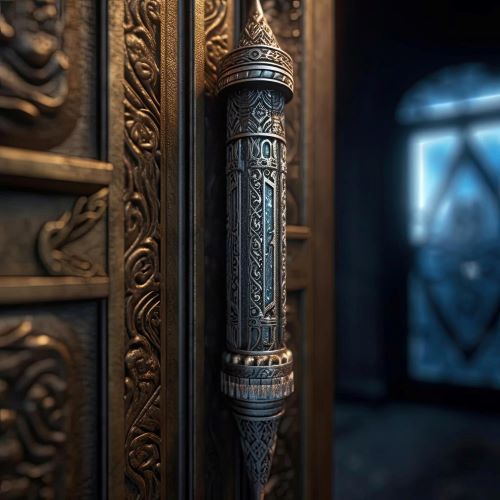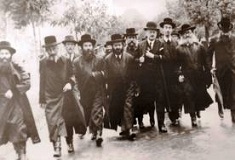Can Artificial Intelligence be the new Rabbi?
הרב שי טחןב טבת, תשפד14/12/2023Can AI be the next rabbi? a halacha article about Asking AI Halacha questions
תגיות:בינה מלאכותיתהלכהרבנים
צילום: שורש תמונות
What is AI, or Artificial Intelligence?
AI, or Artificial Intelligence, is a branch of computer science that aims to create intelligent machines capable of performing tasks that usually require human intelligence. It involves developing algorithms and systems that can analyze data, learn from it, make decisions, and solve problems.
An example of AI applications include image recognition systems that can identify objects in photos, self-driving cars that can navigate and make decisions on the road, and chatbots that can engage in conversations with humans. AI has the potential to revolutionize various industries, including healthcare, finance, transportation, and many others, by automating tasks, improving efficiency, and providing intelligent insights. The question we would like to analyze today is whether AI can also replace the Rabbi’s role and be used as a Posek in the field of Halacha.
with humans. AI has the potential to revolutionize various industries, including healthcare, finance, transportation, and many others, by automating tasks, improving efficiency, and providing intelligent insights. The question we would like to analyze today is whether AI can also replace the Rabbi’s role and be used as a Posek in the field of Halacha.
This is unlike internet searching, which uses search-engines like Google to find specific information or resources online, by inputting keywords or phrases and retrieve relevant web pages, articles, or documents. Internet searching relies on algorithms that match the search query to indexed content on the web.
On the other hand, AI goes beyond simple keyword matching. AI systems are designed to understand and interpret information, recognize patterns, and make connections between different data points. They can learn from large datasets, identify trends, and generate insights that might not be immediately apparent through conventional internet searching.
Asking AI Halacha questions
In the context of Psak Halacha, AI can offer sophisticated tools for researching and analyzing halachic texts and sources. It can process vast amounts of information, identify relevant precedents, and propose potential solutions to complex Halachic questions. AI systems can assist Halachic authorities by providing them with comprehensive and efficient access to Halachic literature, commentaries, and legal opinions. But can we exchange AI with a live Posek?
While internet searching relies on human-generated content and the accuracy of search algorithms, AI has the potential to enhance the decision-making process by analyzing vast amounts of information and proposing potential solutions based on that analysis.
Since Halacha can be complex and nuanced, with varying opinions among different Halachic authorities, relying on a qualified Halachic authority ensures that one receives guidance tailored to the specific circumstances, and a comprehensive understanding of the applicable Halachic principles. They can take into account the details and complexities of a situation, as well as any relevant customs or traditions.
AI has still many disadvantages, like misunderstanding many concepts and answering incorrectly, but as technology advances we can expect those issues to improve significantly and be able to answer precisely. The advantage of having such science with the data of the entire Torah processing Halachic concern in seconds is priceless.
So why not ask AI Halacha?
We know that there are places in the world that non-Jews learn Gemara. Let’s imagine that one of those non-Jewish students would become so proficient in Gemara studies that will be in the level of the Rishonim. Would we be able to ask him Halachic questions? The answer is simple, of course not! If one were to ask “why not?” for after all, he has all the knowledge! The answer is simple. Torah isn’t only about knowledge—it’s about a connection with Hashem. We can find various examples of Rabbis who were not as precise as others and still the Halacha is like them.
For example, the Gemara says that Halacha follows the ruling of Bet-Hillel over Bet-Shamai although Bet-Shamai were sharper and more precise (יבמות יד,א). The reason Halacha is like Bet Hillel, according to the Gemara (עירובין יג,ב), is because they were known to be more humble, patient, and open-minded in their approach to studying and interpreting Jewish law. They would first hear the arguments of Beit Shammai before presenting their own, demonstrating a willingness to consider alternative perspectives. This way of ruling Halacha is very interesting and seemingly wrong, because Halacha should follow whoever is more correct. We see from here that the Middot of a person can determine the Halacha even if they aren’t as precise.
Rav Yaakov Kaminetsky (אמת ליעקב עמוד כח ובעמוד שצ) explains that the Torah wants the human mind to decide what the Halacha is, even if by doing so they might be wrong. He explains the Pasuk says (דניאל ח): “Hashem took the truth and threw it to the ground.” This Pasuk teaches that the truth isn’t counted if the rabbis think differently. This idea is best described in the Gemara (Bava Metzia 59b) when interpreting the passage of “Lo Bashamayim Hi”, as a teaching that the Torah and its laws were given to human beings on Earth and that the authority to interpret and apply those laws was entrusted to the Jewish people and their Sages. This holds true even if the Rabbis are wrong at what they are saying (ראה קצות החושן בהקדמה ובדרשות הר״ן בכמה מקומות).
Should we follow the rabbis when they are wrong?
This amazing idea goes to the extent that even if Hashem Himself says that Halacha is one way, and the rabbis say it’s the other way, we aren’t allowed to listen to Hashem but must follow the rabbis! Let’s examine the following argument of the "Tanur shel Achnai" (the Oven of Achnai), a famous Talmudic dispute found in Baba Metzia (59a-b). The disagreement revolves around the status of a particular oven and the implications it has for the laws of ritual purity.
According to the story, the Sages were debating the status of an oven that had been constructed in a unique manner. The question arose as to whether it was considered ritually pure or impure. The majority opinion held that the oven is impure, but Rabbi Eliezer argued that the oven was ritually pure.
Despite Rabbi Eliezer's strong arguments and even his appeal to various supernatural signs to support his position, Rabbi Yehoshua and the other Sages did not accept his view. Rabbi Eliezer called upon a series of miracles to validate his opinion, including making a carob tree uproot itself and a stream of water flow backward. However, the other Sages rejected these miracles as insufficient proof and maintained their disagreement with Rabbi Eliezer's ruling.
Ultimately, a Divine voice from heaven declared that the Halacha follows Rabbi Eliezer's opinion. However, Rabbi Yehoshua responded by quoting the verse "Lo Bashamayim Hi—it is not in heaven" (דברים ל,יב) to emphasize that the authority to decide Jewish law had been entrusted to the sages on Earth and not to heavenly voices.
The story concludes with Rabbi Natan encountering Eliyahu Hanavi, who explains that the heavenly declaration was made to teach a lesson: that the Halacha is determined through the consensus of the majority of Sages rather than relying solely on heavenly signs or voices.
The dispute of the Tanur shel Achnai highlights the authority of the Sages to interpret and establish Jewish law. It emphasizes the importance of human reasoning and consensus in legal decision-making, even when faced with extraordinary events or divine intervention. The story demonstrates the significance of the rabbinic process of debate and consensus, underscoring the central role of the human interpretation of Jewish law in the ongoing development of Halacha.
Moreover, the Torah commands us that even when the Rabbis are wrong we should still do as they command, as the Pasuk (דברים יז,יא) says that we must follow the Rabbis even if they are wrong, even if they say on left that it’s right or that the right is left.
We see from all of the above that even if AI would be able to override the knowledge of humans, it would not affect the way we perform our religion decision making.
AI, or Artificial Intelligence, is a branch of computer science that aims to create intelligent machines capable of performing tasks that usually require human intelligence. It involves developing algorithms and systems that can analyze data, learn from it, make decisions, and solve problems.
An example of AI applications include image recognition systems that can identify objects in photos, self-driving cars that can navigate and make decisions on the road, and chatbots that can engage in conversations

צילום: שורש תמונות
This is unlike internet searching, which uses search-engines like Google to find specific information or resources online, by inputting keywords or phrases and retrieve relevant web pages, articles, or documents. Internet searching relies on algorithms that match the search query to indexed content on the web.
On the other hand, AI goes beyond simple keyword matching. AI systems are designed to understand and interpret information, recognize patterns, and make connections between different data points. They can learn from large datasets, identify trends, and generate insights that might not be immediately apparent through conventional internet searching.
Asking AI Halacha questions
In the context of Psak Halacha, AI can offer sophisticated tools for researching and analyzing halachic texts and sources. It can process vast amounts of information, identify relevant precedents, and propose potential solutions to complex Halachic questions. AI systems can assist Halachic authorities by providing them with comprehensive and efficient access to Halachic literature, commentaries, and legal opinions. But can we exchange AI with a live Posek?
While internet searching relies on human-generated content and the accuracy of search algorithms, AI has the potential to enhance the decision-making process by analyzing vast amounts of information and proposing potential solutions based on that analysis.
Since Halacha can be complex and nuanced, with varying opinions among different Halachic authorities, relying on a qualified Halachic authority ensures that one receives guidance tailored to the specific circumstances, and a comprehensive understanding of the applicable Halachic principles. They can take into account the details and complexities of a situation, as well as any relevant customs or traditions.
AI has still many disadvantages, like misunderstanding many concepts and answering incorrectly, but as technology advances we can expect those issues to improve significantly and be able to answer precisely. The advantage of having such science with the data of the entire Torah processing Halachic concern in seconds is priceless.
So why not ask AI Halacha?
We know that there are places in the world that non-Jews learn Gemara. Let’s imagine that one of those non-Jewish students would become so proficient in Gemara studies that will be in the level of the Rishonim. Would we be able to ask him Halachic questions? The answer is simple, of course not! If one were to ask “why not?” for after all, he has all the knowledge! The answer is simple. Torah isn’t only about knowledge—it’s about a connection with Hashem. We can find various examples of Rabbis who were not as precise as others and still the Halacha is like them.
For example, the Gemara says that Halacha follows the ruling of Bet-Hillel over Bet-Shamai although Bet-Shamai were sharper and more precise (יבמות יד,א). The reason Halacha is like Bet Hillel, according to the Gemara (עירובין יג,ב), is because they were known to be more humble, patient, and open-minded in their approach to studying and interpreting Jewish law. They would first hear the arguments of Beit Shammai before presenting their own, demonstrating a willingness to consider alternative perspectives. This way of ruling Halacha is very interesting and seemingly wrong, because Halacha should follow whoever is more correct. We see from here that the Middot of a person can determine the Halacha even if they aren’t as precise.
Rav Yaakov Kaminetsky (אמת ליעקב עמוד כח ובעמוד שצ) explains that the Torah wants the human mind to decide what the Halacha is, even if by doing so they might be wrong. He explains the Pasuk says (דניאל ח): “Hashem took the truth and threw it to the ground.” This Pasuk teaches that the truth isn’t counted if the rabbis think differently. This idea is best described in the Gemara (Bava Metzia 59b) when interpreting the passage of “Lo Bashamayim Hi”, as a teaching that the Torah and its laws were given to human beings on Earth and that the authority to interpret and apply those laws was entrusted to the Jewish people and their Sages. This holds true even if the Rabbis are wrong at what they are saying (ראה קצות החושן בהקדמה ובדרשות הר״ן בכמה מקומות).
Should we follow the rabbis when they are wrong?
This amazing idea goes to the extent that even if Hashem Himself says that Halacha is one way, and the rabbis say it’s the other way, we aren’t allowed to listen to Hashem but must follow the rabbis! Let’s examine the following argument of the "Tanur shel Achnai" (the Oven of Achnai), a famous Talmudic dispute found in Baba Metzia (59a-b). The disagreement revolves around the status of a particular oven and the implications it has for the laws of ritual purity.
According to the story, the Sages were debating the status of an oven that had been constructed in a unique manner. The question arose as to whether it was considered ritually pure or impure. The majority opinion held that the oven is impure, but Rabbi Eliezer argued that the oven was ritually pure.
Despite Rabbi Eliezer's strong arguments and even his appeal to various supernatural signs to support his position, Rabbi Yehoshua and the other Sages did not accept his view. Rabbi Eliezer called upon a series of miracles to validate his opinion, including making a carob tree uproot itself and a stream of water flow backward. However, the other Sages rejected these miracles as insufficient proof and maintained their disagreement with Rabbi Eliezer's ruling.
Ultimately, a Divine voice from heaven declared that the Halacha follows Rabbi Eliezer's opinion. However, Rabbi Yehoshua responded by quoting the verse "Lo Bashamayim Hi—it is not in heaven" (דברים ל,יב) to emphasize that the authority to decide Jewish law had been entrusted to the sages on Earth and not to heavenly voices.
The story concludes with Rabbi Natan encountering Eliyahu Hanavi, who explains that the heavenly declaration was made to teach a lesson: that the Halacha is determined through the consensus of the majority of Sages rather than relying solely on heavenly signs or voices.
The dispute of the Tanur shel Achnai highlights the authority of the Sages to interpret and establish Jewish law. It emphasizes the importance of human reasoning and consensus in legal decision-making, even when faced with extraordinary events or divine intervention. The story demonstrates the significance of the rabbinic process of debate and consensus, underscoring the central role of the human interpretation of Jewish law in the ongoing development of Halacha.
Moreover, the Torah commands us that even when the Rabbis are wrong we should still do as they command, as the Pasuk (דברים יז,יא) says that we must follow the Rabbis even if they are wrong, even if they say on left that it’s right or that the right is left.
We see from all of the above that even if AI would be able to override the knowledge of humans, it would not affect the way we perform our religion decision making.
הוסף תגובה
עוד מהרב שי טחן
עוד בנושא הלכה






.jpg)

